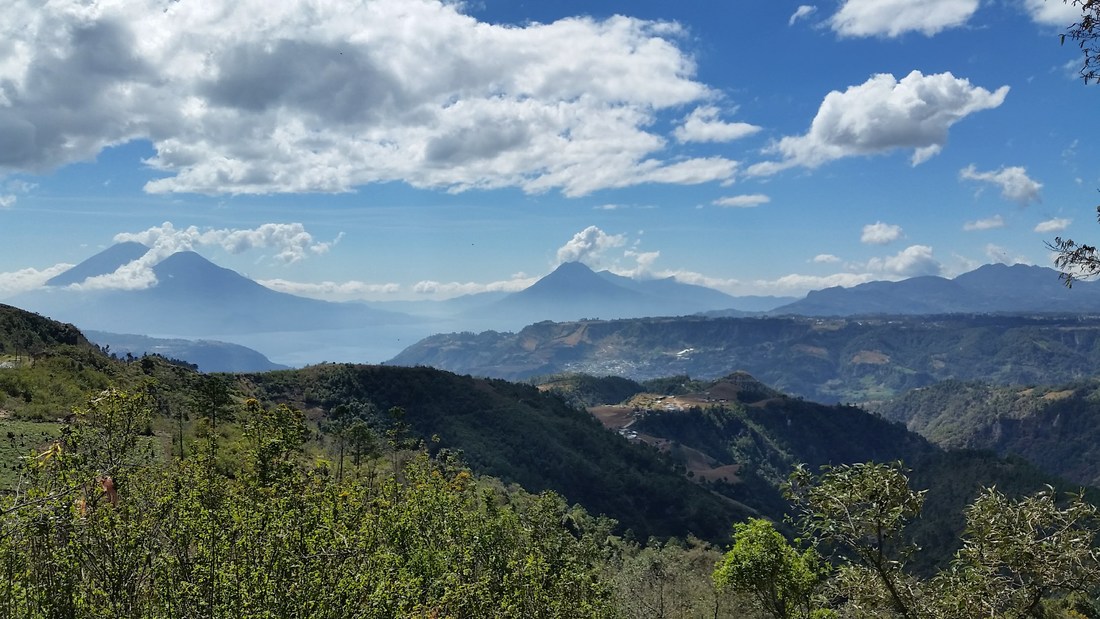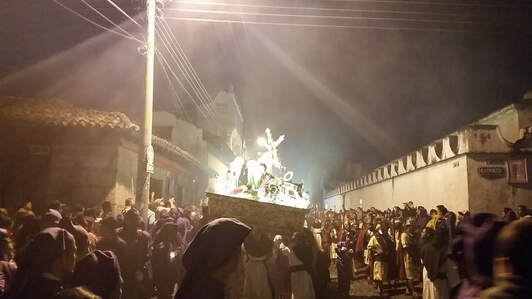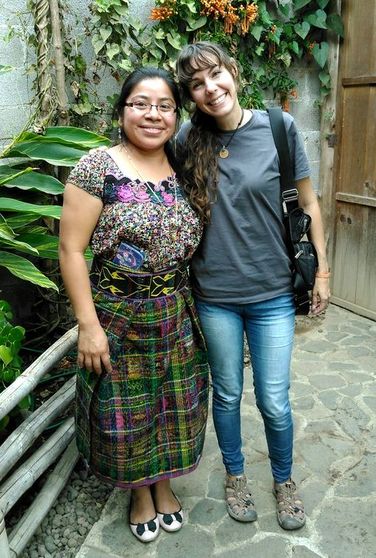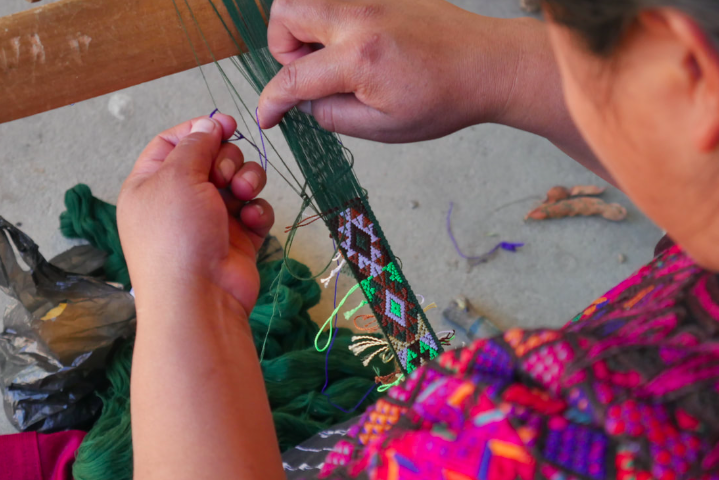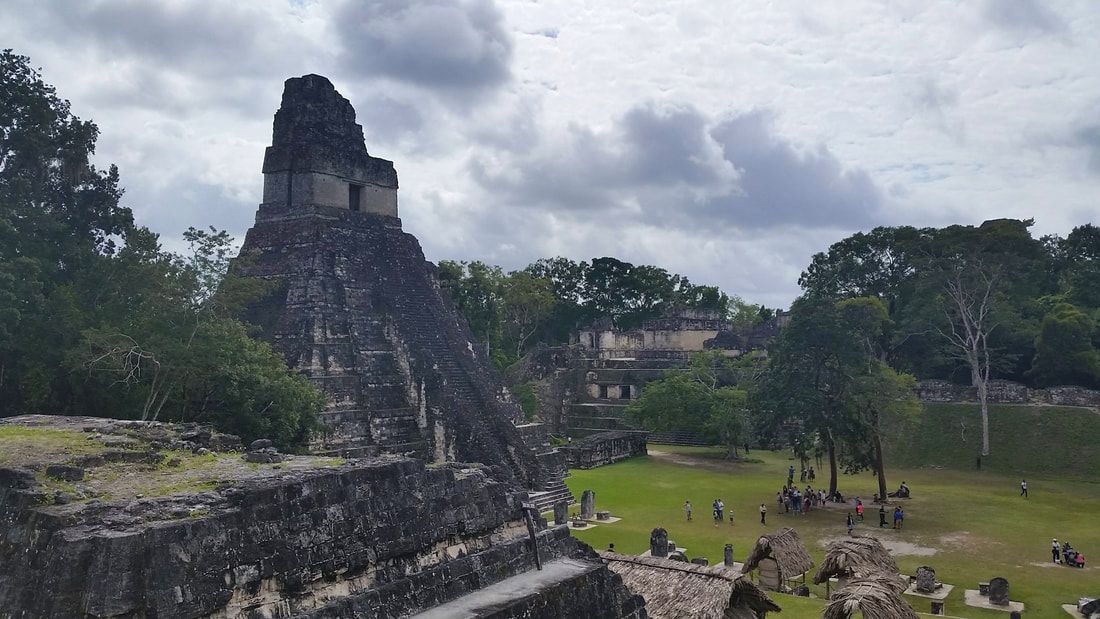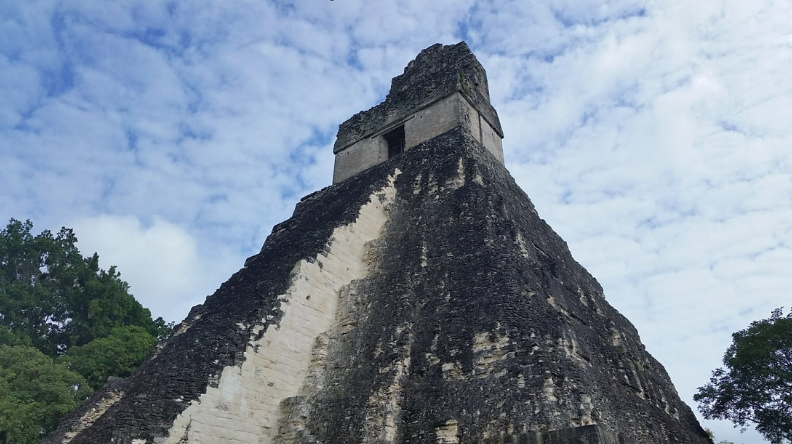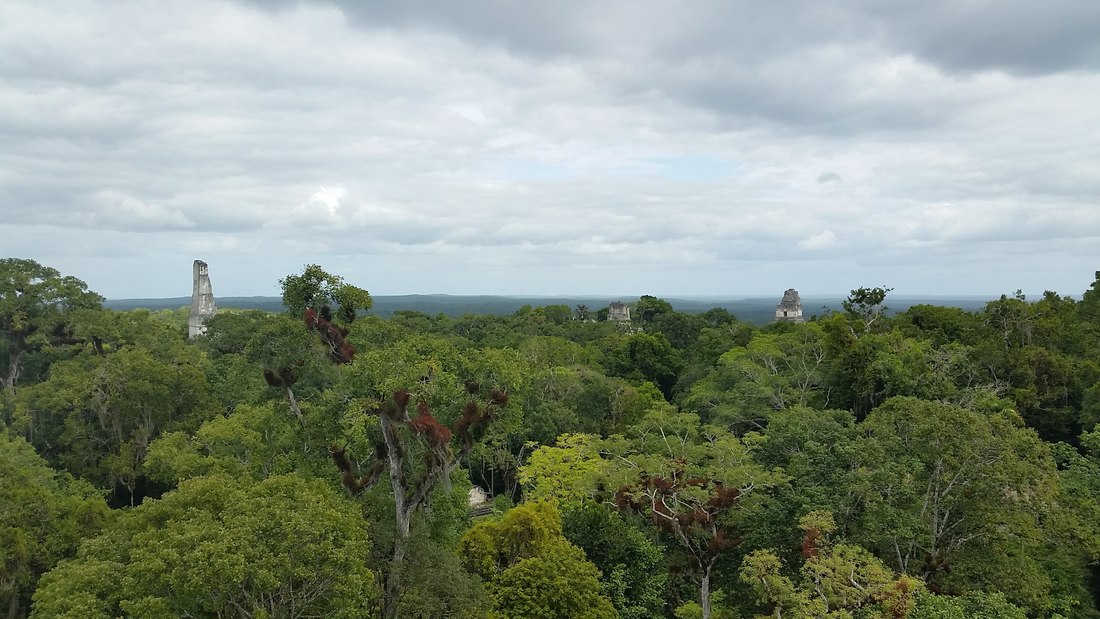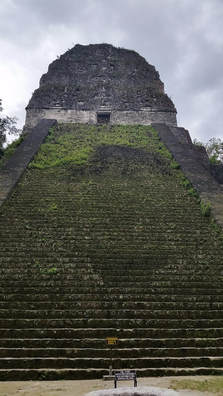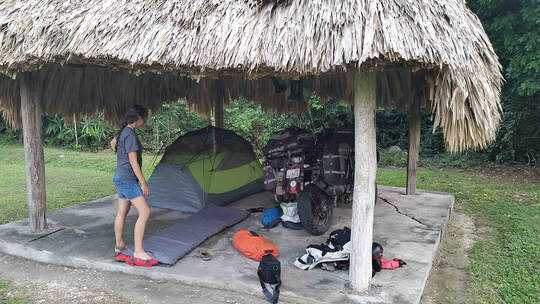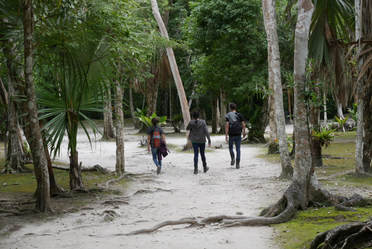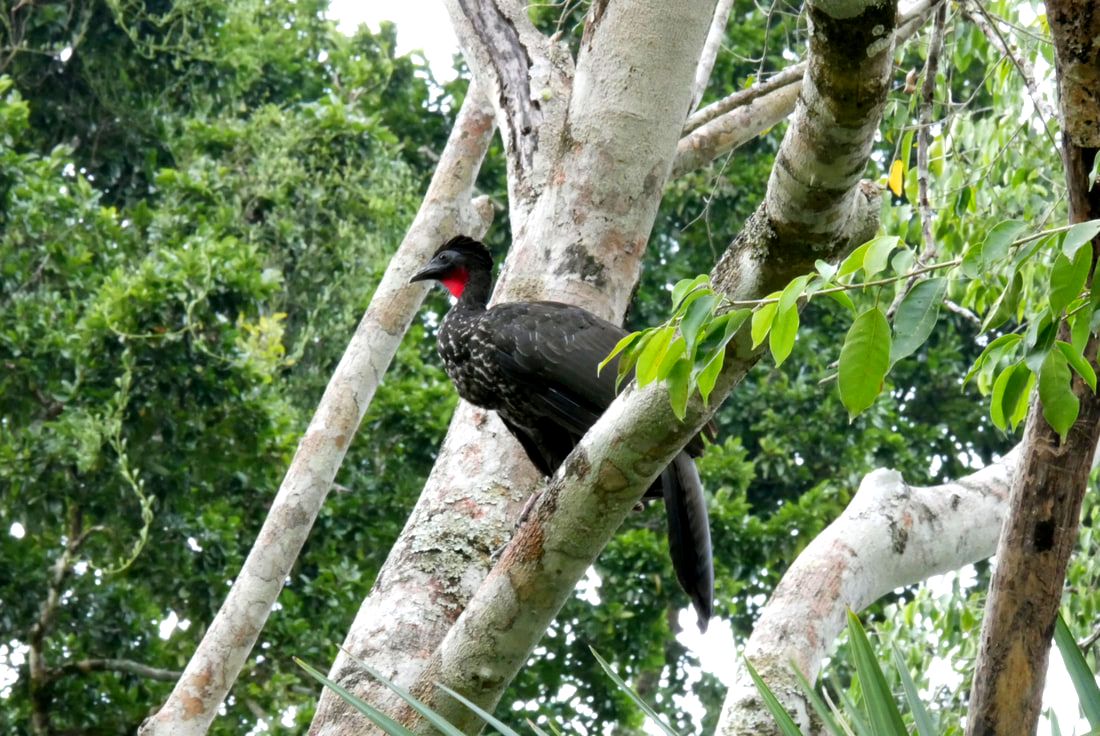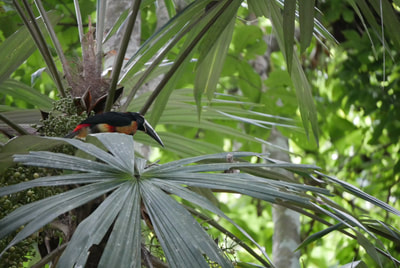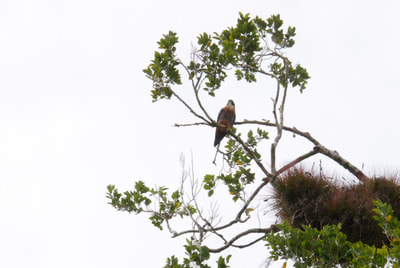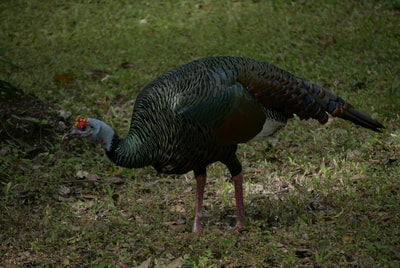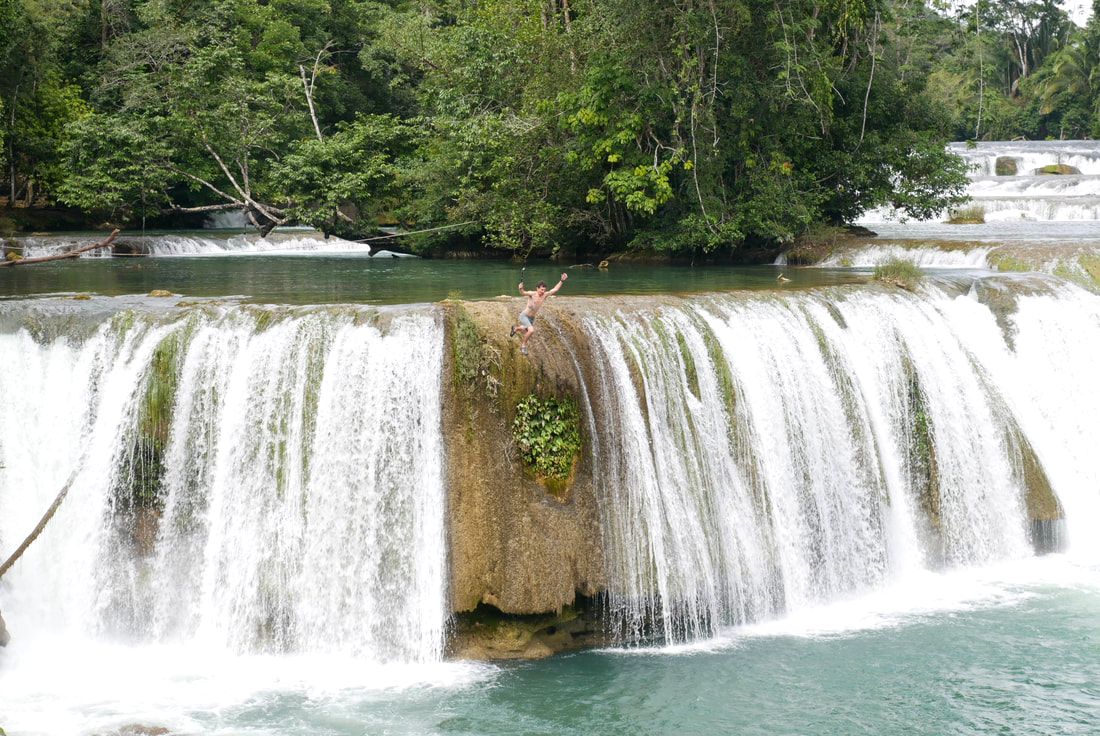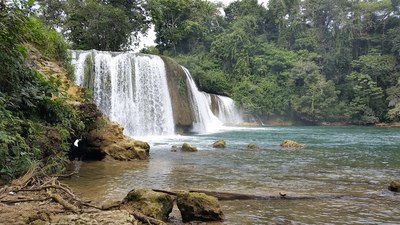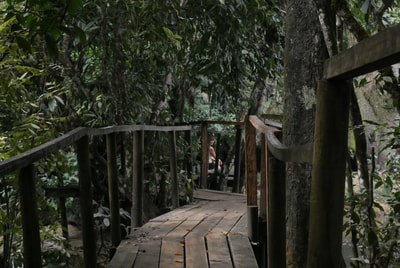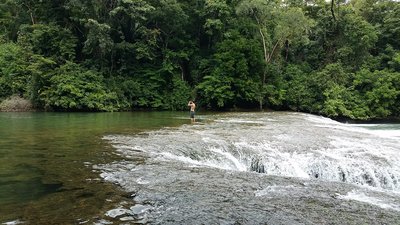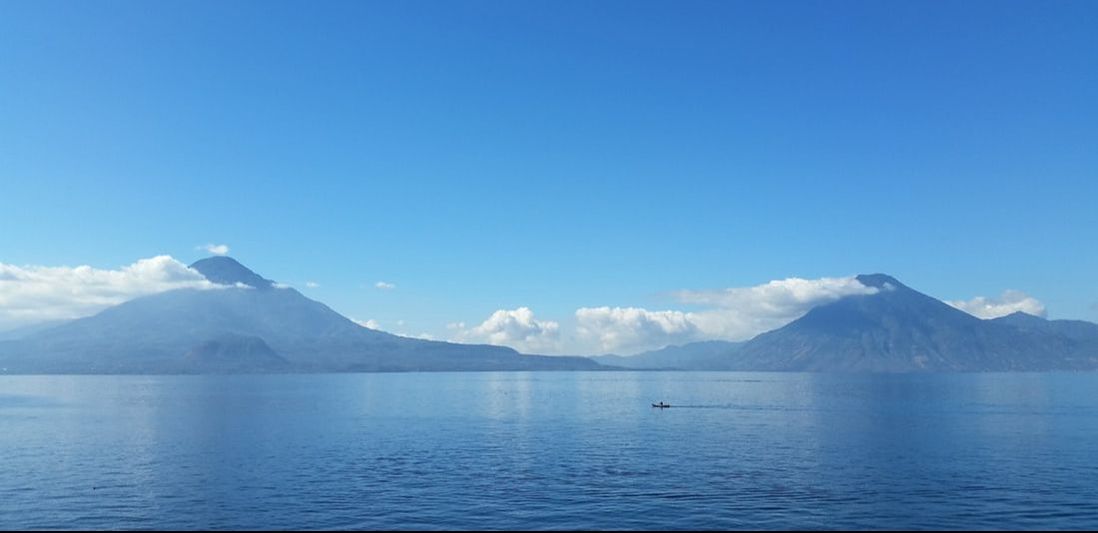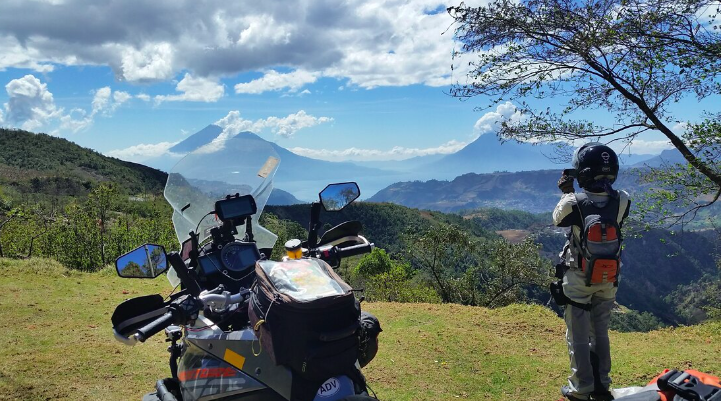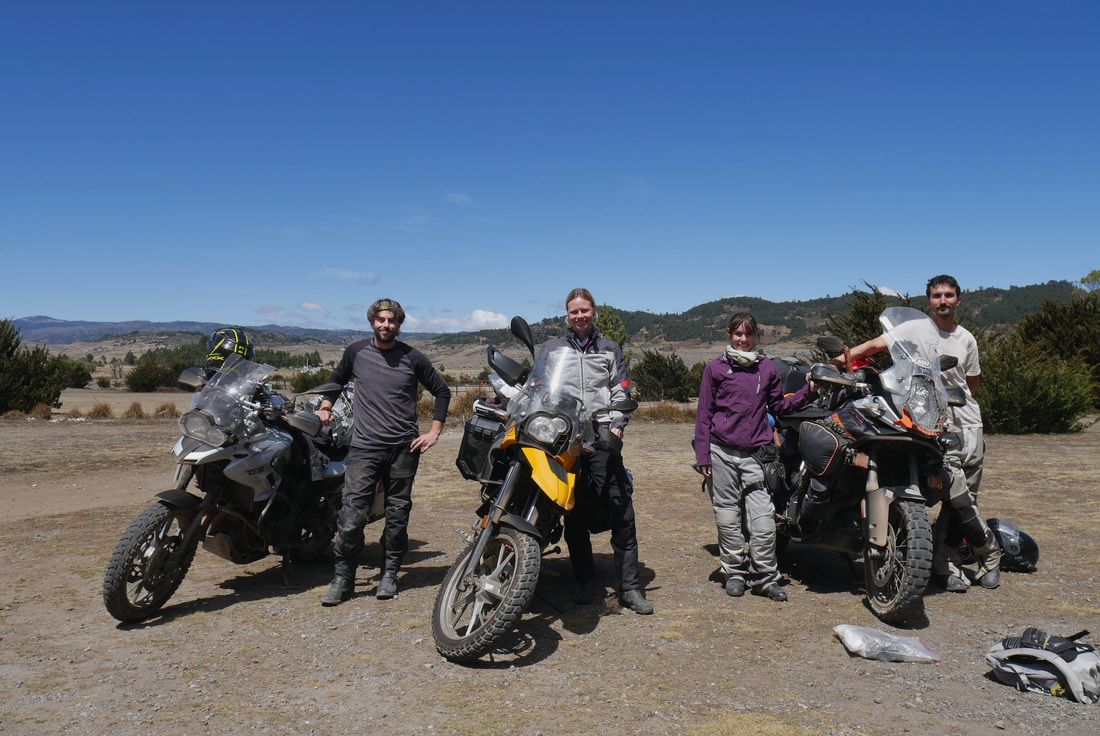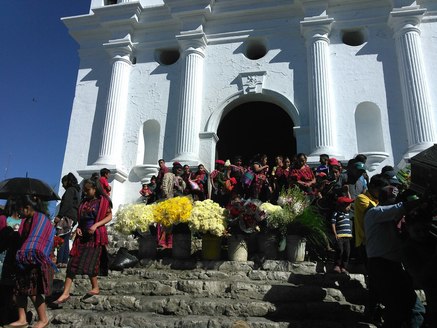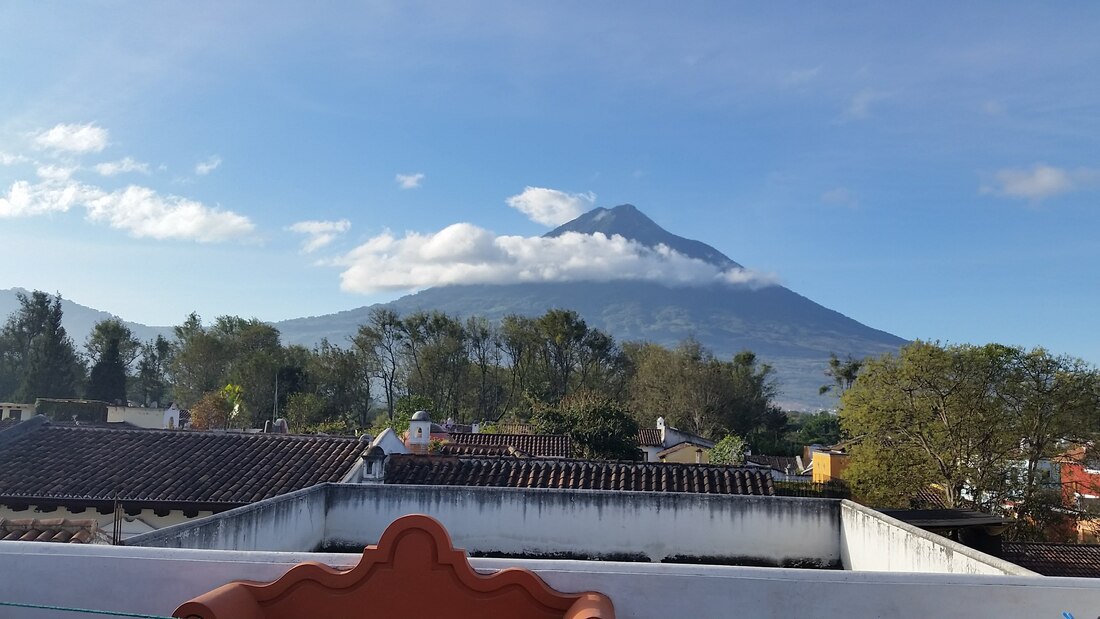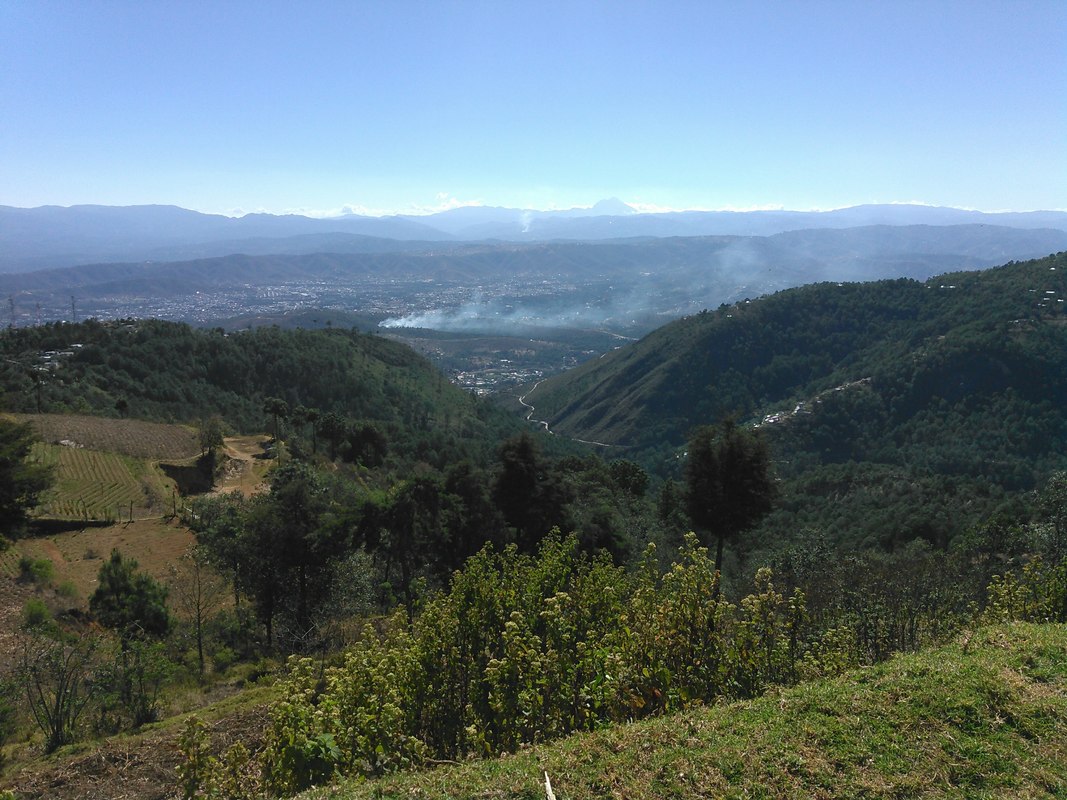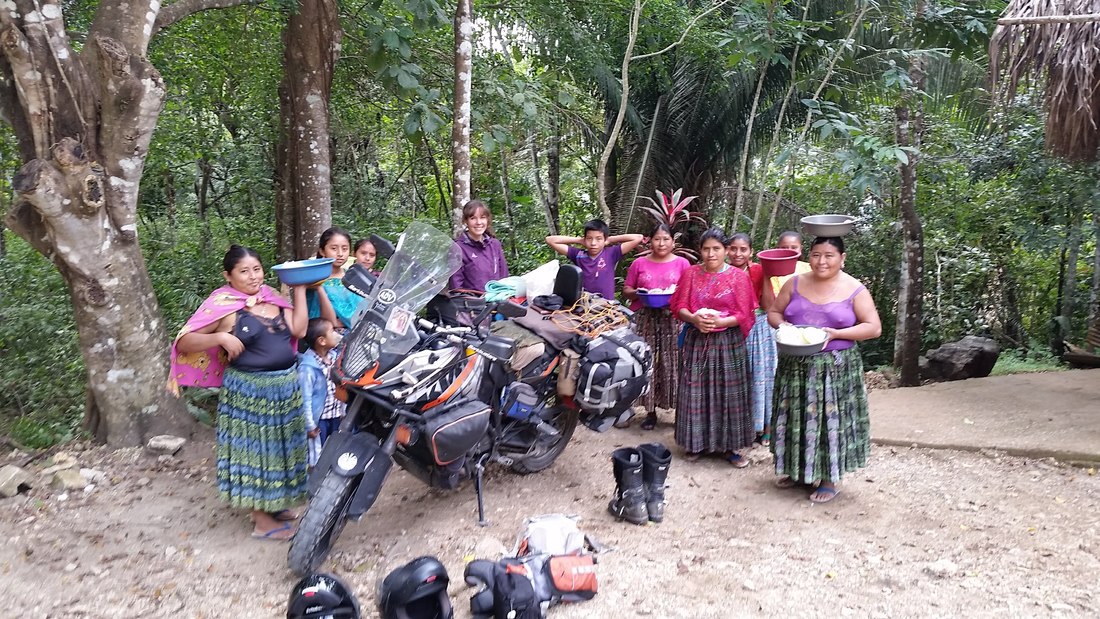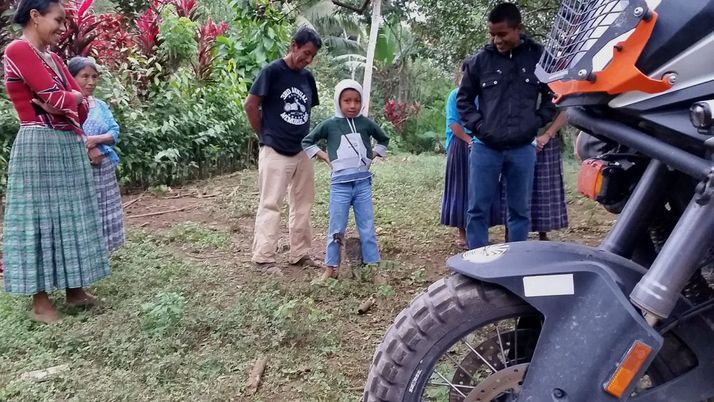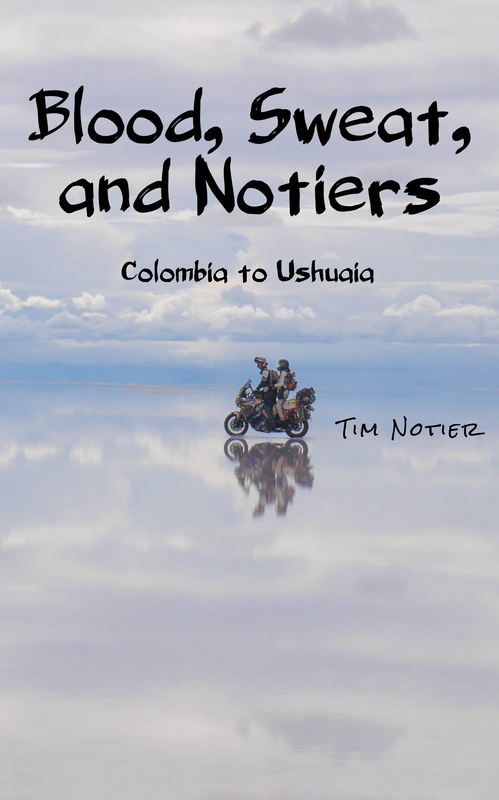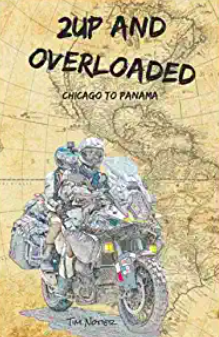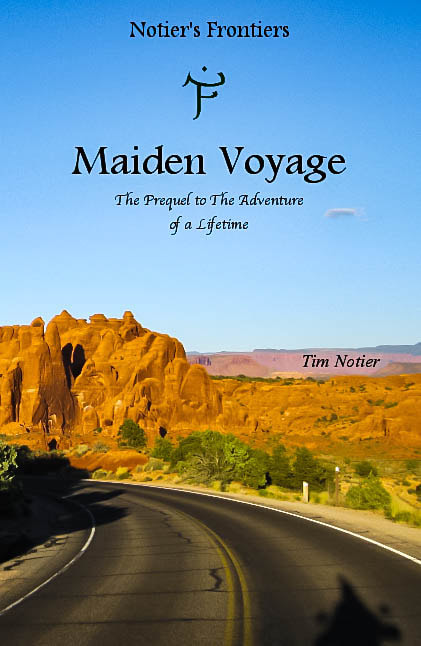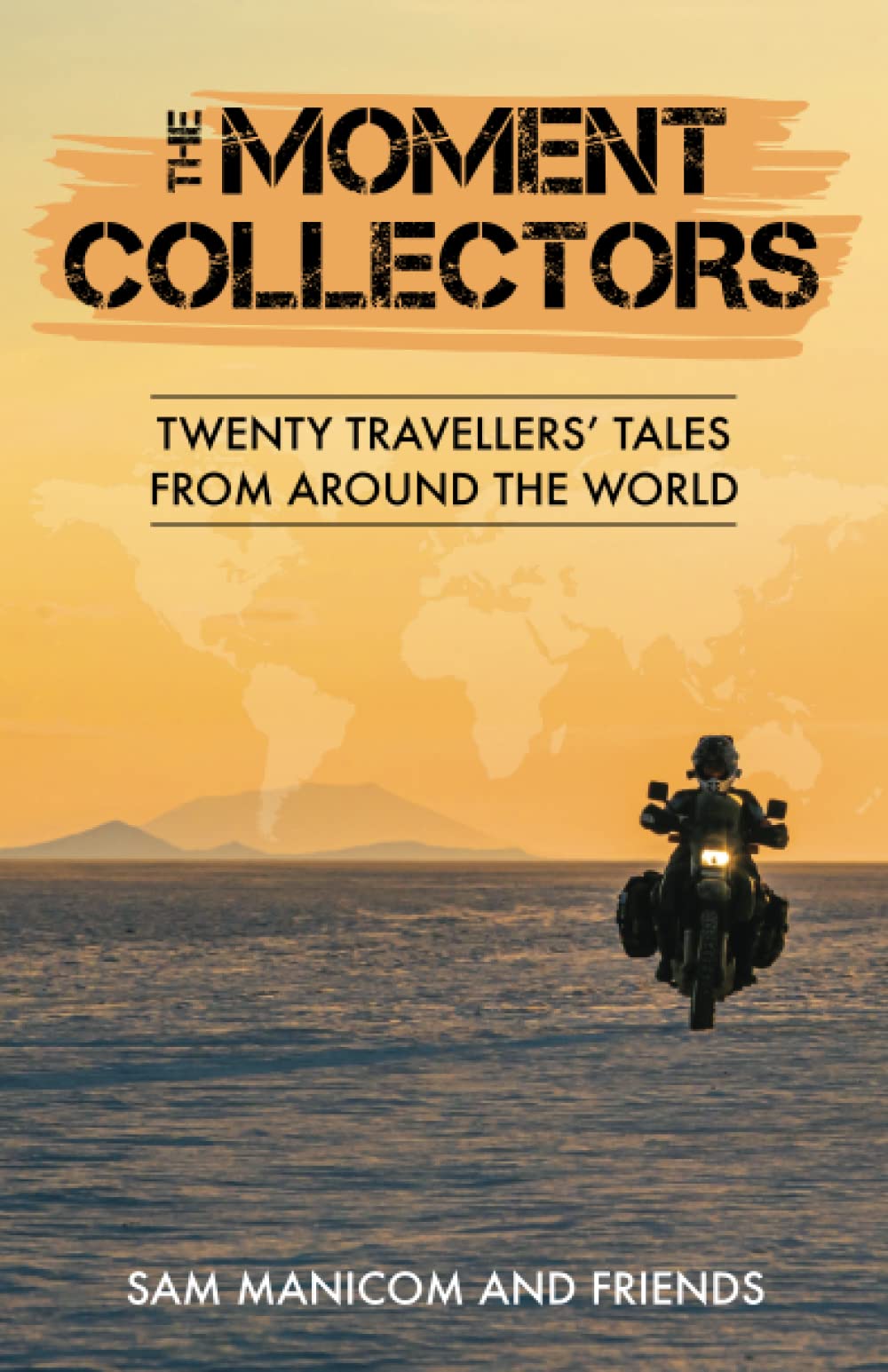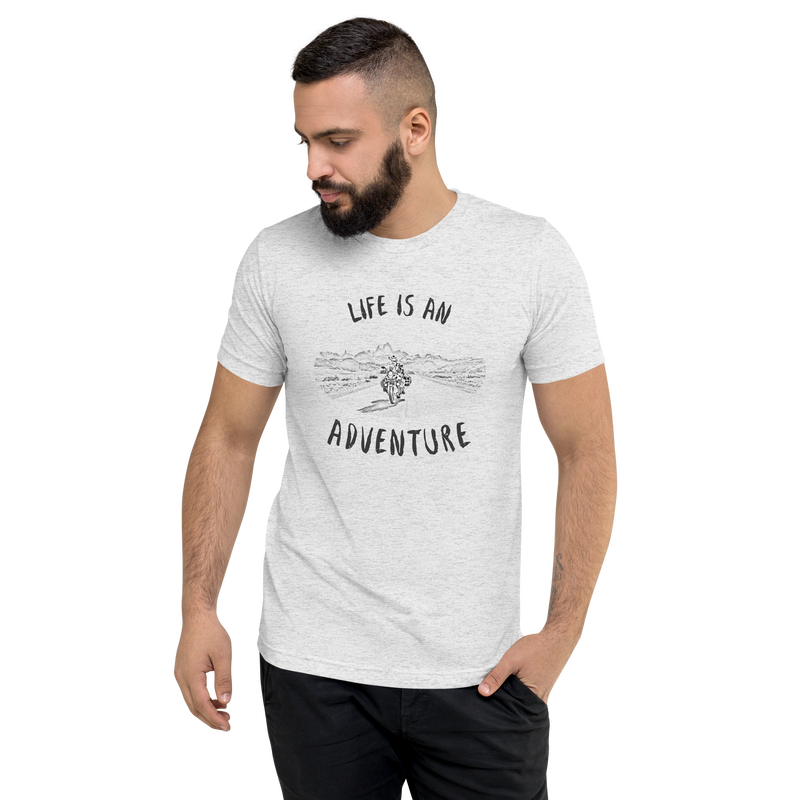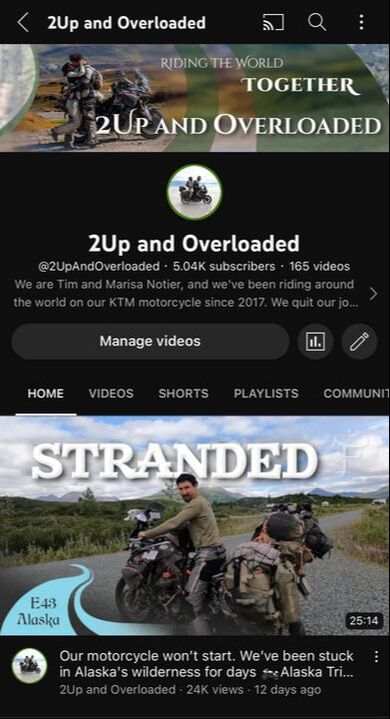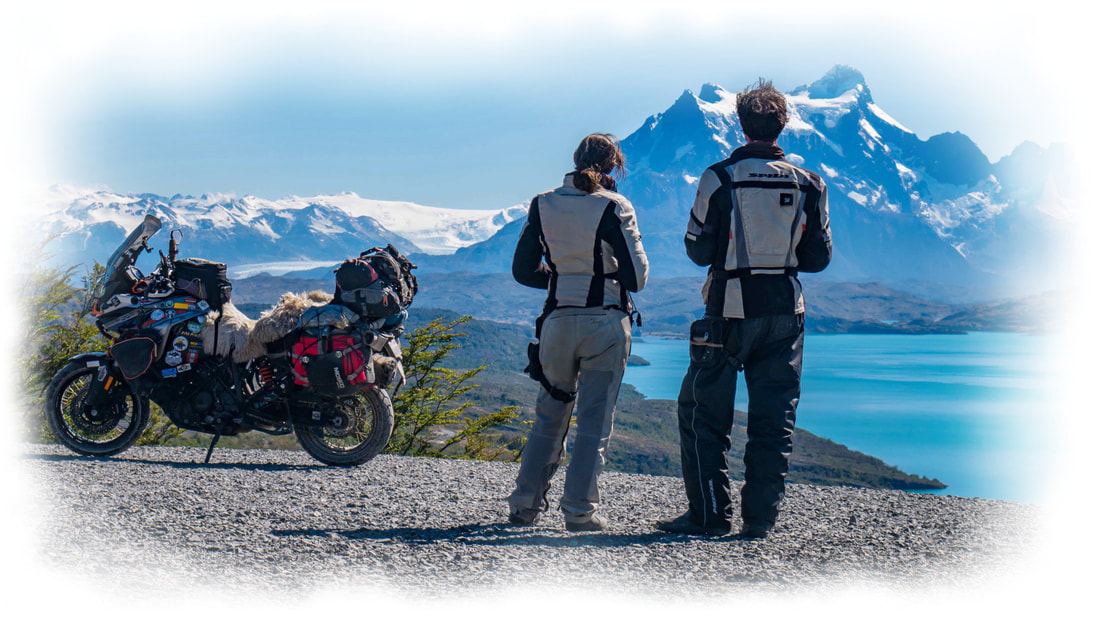By Marisa
Guatemala: a land of fire and water, of jungle and mountains, of colorful textiles that match the colorful fruit and parrots decorating the trees. It's an ancient land still steeped in its traditions, and a place where sometimes it feels as if time has stopped. If I had to sum up Guatemala in one word, it would be indigenous. As much as 60% of the population of Guatemala are considered to be indigenous peoples, more than any other Central American country. Most of these communities still speak Pre-Columbian languages, they often wear traditional clothing, and many still perform some of their centuries-old religious practices, albeit under a Christian pretext. During our two months in Guatemala, Tim and I were fortunate enough to encounter some of the 24 different ethnic groups such as the Q'eqchi in Central Guatemala, K'iche' in the Highlands, and Tz'utujil around Lake Atitlán. Many of these people are the direct descendants of the Maya, and it surprises me to think that I once believed the Mayans to be gone. It's true their cities were abandoned, many for unknown reasons, but in Guatemala you can actually come face to face with the modern-day Maya. Though most of their 23 Amerindian languages are related, each community is distinct, and can be recognized by their style of clothing and weaving patterns. Many women can be seen wearing their colorful skirts and blouses, though most men wear western clothes. As the story goes, this is said to be because during the Spanish colonial years, a law had been put into place stating that people could not travel outside of their local districts. And since the men were the ones to usually travel, they wore Spanish clothes so they couldn't be recognized by their region of residence. I can't express how grateful I am to have had the chance to become immersed in some of these communities, and learn about their customs that reach back through the centuries. Tim and I even had our Mayan horoscopes read to us in Coban, which was a real treat. To no surprise, Tim has ALL thirteen energies associated with the Mayan calendar. The following are a few other great reasons to visit Guatemala: TikalThe lost city of Tikal was the capital of one of the most powerful kingdoms of the ancient Maya. At one point, Tikal's population may have been as high as 90,000, and it was a city of prominence between 200-900 AD. You can sense Tikal's grandeur the moment you step foot into its Great Plaza. Besides its numerous temples, the tallest of which is 230 ft. high (70 meters), Tikal has palaces, administrative buildings, ball courts, smaller groups of pyramids, residential areas, and what researchers believe to have been a jail. And that is only the excavated portion. New structures are continuously being found as more sites are unearthed. While we were visiting Tikal, some ground-breaking news shocked the world as a team of researchers using laser technology revealed that 60,000 or more Mayan structures still lie unexcavated under the dense forest surrounding Tikal. These include homes, palaces, tombs, even highways. Some historians are now comparing the ancient Mayan civilization to that of the ancient Greeks and Chinese. This is a huge breakthrough for the indigenous Mesoamerican people to finally show the historical importance and advancement of their ancestors. If you would like to visit Tikal, keep in mind that despite being situated in the remote jungles of northern Guatemala, it's a major tourist attraction, and busloads of people arrive daily to visit it. So plan ahead, and give yourself enough time to enjoy it because to truly explore all of its treasures, you won't be able to see it all in one day. We had the unique experience of camping just outside the main park's gates. The mosquitos came out at dusk, and were vicious little creatures, but then the fireflies came out like fairies dancing across the field in front of us. Once we settled down for the night, howler monkey began to chant their "special" calls. It was a soundbite straight out of any horror movie. We went to sleep scratching at fresh mosquito bites, and to a nightmarish lullaby of nature, it was amazing! Tikal is one of the last places in the world where hidden temples are still out there in the jungle just waiting to be found. So if you have a little Indiana Jones in you, then you should definitely come to Tikal. And if I had to pick my favorite out of all the Mayan ruins that we visited in Central America, Tikal would be it. The Jungle of the PetenTikal is in the jungle of Guatemala's norther region called El Petén. It's remote, it's wild, and it's teeming with incredible animals such as spider monkeys, howler monkeys, scarlet macaws, toucans, anteaters, coatimundis (what's that you ask? check out the pictures above), and even jaguars, though you're sadly not likely to see one. Tikal is at the heart of the Maya Biosphere Reserve, which represents the second-largest tract of forest on the American continent after the Amazon Rainforest in Brazil. This is truly the greatest piece of rainforest that North America has to offer, and it does not disappoint, as most people who visit Tikal see families of monkeys and many exotic birds. Birds are what Guatemala is famous for. Guatemala's currency is actually named after a bird (the Quetzal), though it lives in the cooler cloud forests, not the Petén, and is extremely endangered. But green parrots, yellow-billed toucans, and scarlet macaws all call this place home, not to mention the most beautiful wild turkeys you will ever see. We even caught sight of a rare hawk, some herons, and a group of big birds in a tree we have no idea what they are. So if you like wildlife and are interested in coming face to face with some of the world's most exotic species, then come to the remote forests of the Petén. Caves and Waterfalls of Alta VerapazMost tourists who go to Guatemala will hear about a set of picturesque waterfalls in Alta Verapaz called Samuc Champey. Lots of people visit them, and that's wonderful, but we were advised to first check out a different set of waterfalls called Las Conchas. And it turned out to be so incredible and private, that we never felt the need to go to Samuc Champey afterwards. Unlike what we heard about Samuc Champey, which has a high amount of tourists visiting it every day, we were literally the only people at Las Conchas. It was our own private paradise. The largest of the waterfalls is about ten meters high (30 ft.) and you can jump off it! Tim, who was braver than I, did so a few times, as you can see in our video of Guatemala - The Green North. Tim wants me to insist that if you make fun of his bald spot in the video, he will unfriend you on Facebook. Las Conchas turned out to be such a secret gem that we urge you to visit it to feel the same sense of paradise that we did. 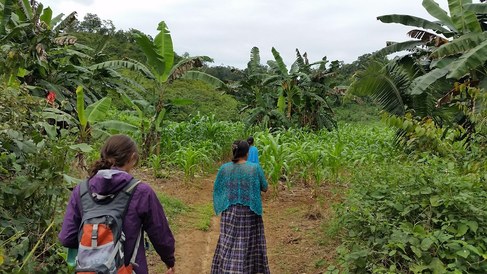 Me being led to the caves through forested farmlands by two Q'eqchi women. Me being led to the caves through forested farmlands by two Q'eqchi women. Near Las Conchas were the caves of Se'tzol, which were also recommended to us by a local, or else we would have never known about them, and certainly would have never found them. In fact, we had to be escorted to a farmer's private land. This involved us riding two up down a narrow path full of trenches and ruts with barbed wire fences on either side of us, a truly nerve-wrecking ride. We were then led by some women through their fields to a man who knew the cave system. And even though we didn't have enough time to do so, you can also go swimming and tubing in the caves! When we came out of the caves on the other side, we found ourselves surrounded by some local women and children who had come by horse to bathe in the river. Once again, we were the only tourists there. So if you want a truly authentic and personal experience in Guatemala, then come to Chahal in Alta Verapaz where you can visit these waterfalls and caves. Lake AtitlanWe decided to stay at this gorgeous lake for an entire month, and it's not hard to see why. Surrounded by three volcanoes, Lake Atitlán is considered by many to be one of the most beautiful lakes in the world. There are also numerous villages on the lake's shores that are famous for their cultural festivals, colorful textiles, and other indigenous arts and crafts. All of these reasons also make Lake Atitlán an extremely touristy place, but in an earthy hippy type of way which can sometimes be a bit overboard. Some of the people looked like characters from the Fifth Element, who would happily read your future or rate your karma for the price of a couple cigarettes, we avoided them as much as we could. We actually made a bit of a snafu at the beginning of our visit to the lake. The problem was we booked our guesthouse room for a month in a town called San Pedro la Laguna, and then only afterwards we looked up the best route to our accommodations. The roads to San Pedro were not in the best shape, and have been known to be a common place for robberies. We learned that everyone usually gathers at Panajachel across the lake, then take small boats to all of the different towns surrounding the lake, including San Pedro. So, the day before we were to arrive, it dawned on us that we were motorcycle travelers who were supposed to be staying someplace for a month that was fairly difficult to get to with a motorcycle. Great. And then we met Jess and Greg, fellow motorcycle travelers, who came to the rescue. This Canadian/American couple had been living in Panajachel off Lake Atitlán for the past year, and kindly offered to let us keep our bike at their place while we took the boat to San Pedro. It turned out that not only did they save us from our dumb predicament, but they quickly became great friends and fantastic local guides. We spent every weekend exploring the region on our bikes with them. During the weekdays, both Tim and I enrolled in a Spanish course for a week, and planned on continuing if progress was made. But Tim spent several nights a week playing poker (with 20 Quetzales buy-ins, around $3 dollars, no great loss of money). And when he wasn't playing poker, he was petting one of the eight cats that lived in the courtyard. He actually got pretty good at poker by the end, and petting cats. If only he had dedicated as much time to his Spanish homework, he'd be fluent by now. AntiguaAntigua is an old Spanish colonial city, and similar to Lake Atitlán, it's surrounded by three volcanoes. The closest is Volcán de Agua pictured above, but the most active is aptly named Volcán de Fuego (Volcano of Fire). At night, if you gaze at it, you can often see the faint fiery glow of lava running down from its peak. With its restored baroque charm and quaint gardened plazas, Antigua is gorgeous. It has a lively vibe and a close-nit community feel, but it is the epitome of touristy. You will hear more languages spoken from around the world in Antigua than Spanish, which is actually kind of cool that so many people from across the globe come there. Antigua is also a mecca for Spanish language learners, and has more Spanish language schools than I can count. So if you come to visit Antigua, as nearly all tourists in Guatemala do, bring your camera and your wallet, and then just keep in mind that you won't be the only foreigner there, ha! Things I didn't like about GuatemalaEven though we had such a wonderful time in Guatemala, no place is perfect. The following is a list of my not-so-favorite aspects about the country: 
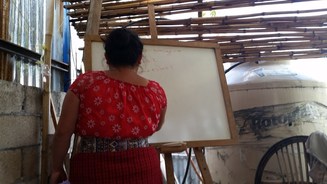
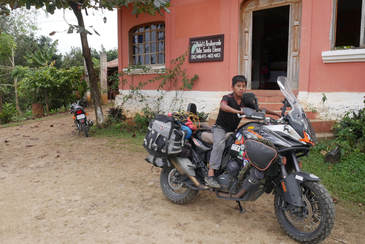 A local boy of Chahal dreaming big on our bike. A local boy of Chahal dreaming big on our bike.
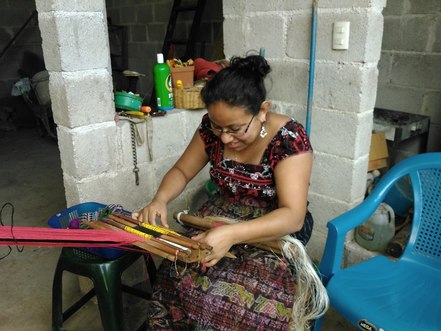 A local Tz'utujil woman making a faja, or belt, in San Pedro la Laguna, Gautemala. A local Tz'utujil woman making a faja, or belt, in San Pedro la Laguna, Gautemala.
This has been a long blog, but there are so many incredible experiences to be had in Guatemala, I felt the need to share my thoughts. Its incredible people, its long history, and its indigenous cultures all make this country stand alone amongst the Central American nations. And like the gorgeous textiles that it's known for, Guatemala weaves together the individual backgrounds of all its people into colorful patterns that reflect the natural beauty of their surroundings. I hope I have inspired someone to consider visiting Guatemala, because I know if you do, it will hold a special place in your heart as it does in mine. Our Current Gear |
Follow UsRide with us from Chicago to Panama!
2Up and Overloaded Get inspired by the tale that started it all:
Maiden Voyage 20 author's tales of exploring the world!
The Moment Collectors Help us get 40 miles further down the road with a gallon of gas!
Become a Patron for early access to our YouTube Videos!
Subscribe to our YouTube Channel!
Subscribe to our Blog by Email
|
2Up and Overloaded
Join our clan of like-minded adventurers...
Proudly powered by Weebly
Designed by Marisa Notier

